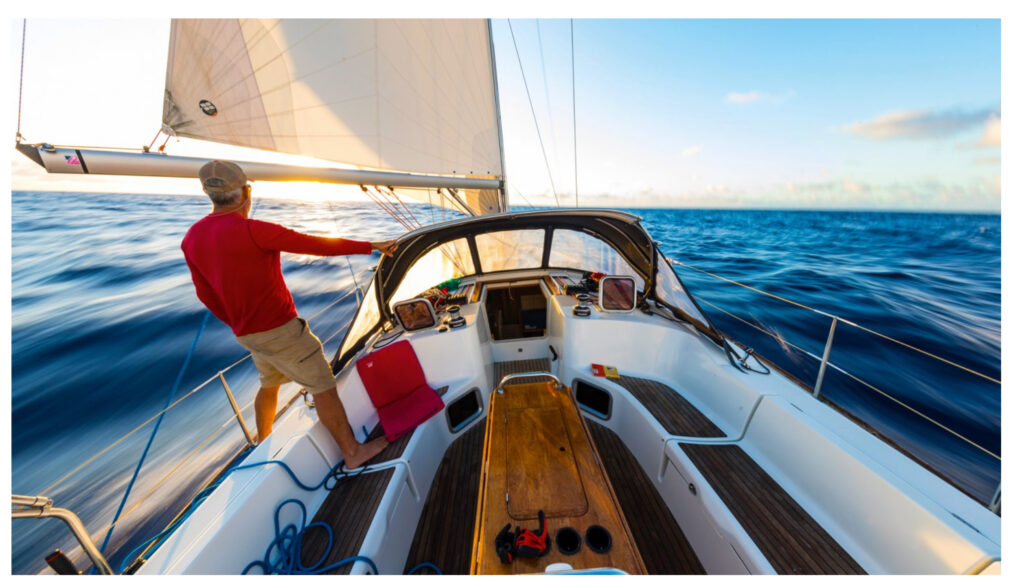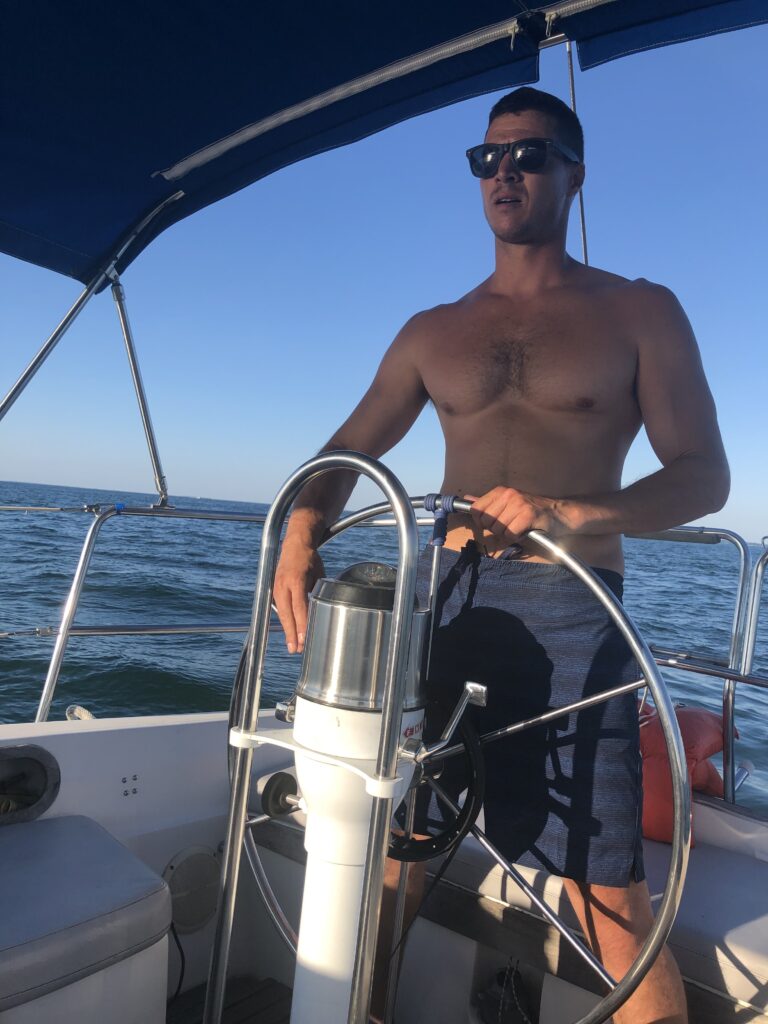
The Challenges of Single-Handed Sailing and the Importance of Practicing Safety at Sea.
Single-handed sailing—navigating a vessel entirely alone—stands as one of the most demanding and rewarding pursuits in the maritime world. It requires not only mastery of sailing skills but also an extraordinary level of mental and physical endurance. While it evokes the romantic image of a lone sailor embracing the vastness of the ocean, the reality is far more complex and fraught with risks. Without a crew to rely on, every task, from sail changes to navigation to meal preparation, falls on one individual. This relentless demand for self-reliance amplifies even minor mishaps into potentially life-threatening situations, making single-handed sailing a true test of skill, discipline, and resilience.
The challenges of solo sailing begin long before a boat leaves the harbor. Preparation is critical. Sailors must ensure their vessel is equipped with reliable systems, easy-to-manage sail configurations, and sufficient supplies for the intended voyage. Mechanical failures, rigging problems, and adverse weather conditions that could be manageable with a crew become significantly more hazardous when tackled alone. Even sleep deprivation presents a serious threat. Single-handed sailors must balance the need for rest with constant vigilance, often relying on short naps and alarms to avoid collisions or navigational errors.
Perhaps the most significant challenge, however, is psychological. Loneliness, stress, and fatigue can impair decision-making and erode a sailor’s ability to respond to emergencies. In the absence of another voice to question assumptions or offer support, it’s easy to underestimate danger or overestimate one’s capacity to handle it. Maintaining mental clarity becomes just as crucial as maintaining the boat itself.
These factors underscore the absolute necessity of practicing rigorous safety protocols at sea. For solo sailors, safety isn’t just a matter of best practice—it is a survival strategy. Wearing a tether and harness at all times, especially when on deck, is non-negotiable; a person overboard in solo sailing is often a fatal event. Redundant systems for navigation and communication, including satellite phones, AIS beacons, and EPIRBs (Emergency Position Indicating Radio Beacons), ensure that help can be summoned if needed. Weather forecasting tools, emergency drills, and regular check-ins with contacts ashore further bolster a sailor’s resilience against the unexpected.
Training and preparation are key. Many experienced solo sailors spend years building up their skills, practicing maneuvers in controlled conditions, and learning from every voyage. Simulation of emergency scenarios, from equipment failure to knockdowns, helps build the confidence and muscle memory needed to act decisively under pressure.
In sum, while single-handed sailing embodies the spirit of independence and adventure, it also demands humility in the face of the sea’s unpredictability. Practicing diligent safety measures isn’t about dampening the experience—it’s about ensuring that the sailor lives to enjoy another voyage. In this realm, caution and competence are as vital as courage.

With all of this being said it is a fun and challenging under when I take the Catalina 36 out on Lake Erie for a solo sail, or even a 2-3 day solo adventure. I did not just dive in and start sailing the bigger boats solo. I started off small and then worked my way up. I first sailed a Hobie Wave solo many years ago. This was actually the first boat that I considered finally understanding the concepts of sailing on. I had previously taken out and old Hobie 16 with some friends in college. We really did not know what we were doing but we managed to have a good time and not hurt ourselves, the boat, or anybody else for that matter in the process. This is when my interest for sailing really took off. I practiced on Hobie Waves, Getaways, and 16s, by myself and seldomly with another person. This grew my confidence and I eventually bought my first sailboat., a 1956 Albacore 15’. I sailed this boat 90% of the time solo starting off in lighter winds and gradually taking it out in 15-20 kts. Although this boat was very fast it did not have any ballast and was very unstable. I only overturned it one time and it was a nightmare to right. I had to drag it to shore luckily I was not too far from the beach. I later equipped the mast with a mast float so it would not sink down and turtle.
After a few years of sailing the Albacore 15’ I later sold it and my next boat was a big step. I ended up skipping the middle sized boat and put all my efforts to owning the Catalina 36. I good a good deal on the boat, but it came with some work. I am still in the process of updating just about anything.
Sailing the Catalina 36 solo at first was not really my desire, it came as a necessity. Most of the time with my work schedule I was often off on weekdays and worked the weekends. I would try to get people to sail with but really not many were available. So after sailing the boat with 2-3 the first couple of sails I had to venture out and sail by myself if I really wanted to get out. I was nervous and double checked all my rigging and lines and would only go out in light wind conditions. But no matter how many times you checks things you always miss something. Just about anything that could go wrong did. Which makes it challenging and difficult when you are on the water. However the lessons learned were valuable. Each time I took the boat out solo I would gain confidence and be able to predict the conditions and Chaldea little better. Of course my Autohelm 3000 autopilot helped out immensely. But there were times, and still are, when the autopilot decides not to work. This makes it extra challenging especially when the wind is blowing medium to hard. I developed certain rules about the conditions when I would attempt solo sails. If the winds were over a certain gust velocity i would have different reef points. This basically means I reduce the amount of sail area on the sails so I don’t get overpowered by the wind and I can remain in control of the boat. I have also set parameters where I do not go out if the winds are or forecasted to be greater than my limit.
It takes determination and a curious spirit to sail solo. It is always a good idea to assess your health and physical abilities. One should go on a full stomach and with good sleep. You never know what will happen out there. The forecasts are only so accurate and Murphy’s Law always applies. Things break on your vessel and your surroundings and environment are always changing. And of course there is docking. Depending on the winds it can be a difficult challenge solo. I always try to put out as many fenders as I can out and maybe radio or shout out some helpers. In my opinion one can never have too much pride at the docks. When one goes out on a boat by themselves and returns successfully it is always an accomplishment no matter the weather and conditions. Once you enter out of your comfort zone you are pushing your limits. Progression is the lesson and the learning factor is very valuable. When we return to the docks and discuss the voyage with others everybody gets a chance to learn and the knowledge is priceless. When will you plan your next your next adventure and share it with us?